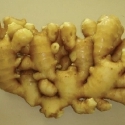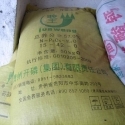27 Oct 2015
Yield Gap, Indigenous Nutrient Supply and Nutrient Use Efficiency for Maize in China
Xu X, Liu X, He P, Johnston AM, Zhao S, Qiu S, et al. (2015). PLoS ONE 10(10): e0140767. doi:10.1371/ journal.pone.0140767
 Nutrient Expert for maize field validation in Jilin
Nutrient Expert for maize field validation in Jilin
Great achievements have been attained in agricultural production of China, while there are still many difficulties and challenges ahead that call for put more efforts to overcome to guarantee food security and protect environment simultaneously. Recently, IPNI China Program published a peer-reviewed journal paper in PLOS One on analyzing yield gap and nutrient use efficiency for maize in China. On-farm datasets from 2001 to 2012 with 1,971 field experiments for maize were collected in four maize agro-ecological regions of China, and the optimal management (OPT), farmers’ practice (FP), a series of nutrient omission treatments were used to analyze yield gap, nutrient use efficiency and indigenous nutrient supply by adopting meta-analysis and ANOVA analysis. Across all sites, the average yield gap between OPT and FP was 0.7 t/ha, the yield response to nitrogen (N), phosphorus (P), and potassium (K) were 1.8, 1.0, and 1.2 t/ha, respectively. The soil indigenous nutrient supply of N, P, and K averaged 139.9, 33.7, and 127.5 kg/ha, respectively. As compared to FP, the average recovery efficiency (RE) of N, P, and K with OPT increased by percentage point of 12.2, 5.5, and 6.5, respectively. This study indicated that there would be considerable potential to further improve yield and nutrient use efficiency in China, and will help develop and inform agricultural policies and strategies, while some management measures such as soil, plant and nutrient are necessary and integrate with advanced knowledge and technologies.




